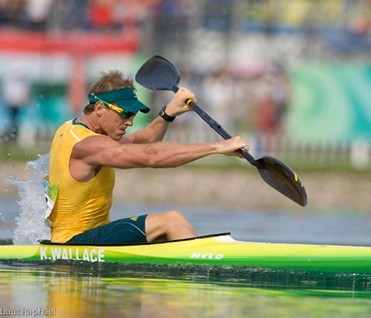WINTER 2010, VOLUME 3 ISSUE 3
In this issue:
Original Research: Acute Effects of Whole Body Vibration on Rate of Force Development and Electromechanical Delay, Original Research: Comparisons between peak power prediction equations in adolescent female basketballers, Original Research: How Psychological skills training, specifically Imagery, affects shooting accuracy in University Netball Players, Original Research: Dry Land Training for Kayaking and its Implications on Longevity and Performance, Reviews and Invited Commentary: Research concepts and methods – 3. Quantitative and statistical aspects of data variables.

Acute Effects of Whole Body Vibration on Rate of Force Development and Electromechanical Delay.
by Junggi Hong, Kristof Kipp, Gianni Maddalozzo, Mark A, Hoffman
The present study examined the effect of acute WBV training on the rate of force development (RFD) and electromechanical delay (EMD) in the soleus muscle.
Research concepts and methods – 3, Quantitative and statistical aspects of data variables
by anon
At the conclusion of research concepts and methods – 2 in the Journal of Sports Therapy (JST) volume 3 (2), I referred to the various categories and families of data variables, and how a basic understanding of their characteristics and behaviour may assist us in the selection and deployment of the most appropriate data samples for quantitative research. You may recall in the same article I also discussed the opportunities and benefits of considering a four-way research matrix, where quantitative and qualitative input variables can be translated into both qualitative and quantitative response variables or outputs, for analytical purposes.
Comparisons between peak power prediction equations in adolescent female basketballers
by Michael J. Duncan, Mark Lyons, Joanne Hankey, Lorayne Woodfield
The aim of this study was to compare previously validated prediction equations for estimating peak power from vertical jumping with actual peak power determined via force platform analysis. Eighteen elite junior female basketball players (age = 16.5 ± .5 years) performed a series of counter movement jumps (CMJ) on a portable force platform.
The Effects of Psychological Skills Training on Shooting Accuracy in University Netball Players.
by Holly Fowler BSc (Hons) Sports Therapy
With athletes increasingly wanting to gain an advantage to succeed many psychological techniques have been developed to provide them with this winning edge, one being mental imagery. Mental imagery has been described by Moran (2004, p.125) as “...an internal representation that gives rise to the experience of perception in the absence of the appropriate sensory input.”
Dry Land Training for Kayaking and its Implications on Longevity and Performance
by Glen Workman
I have been employed by the Australian Institute of Sport (AIS) and the State Institutes as a Strength and Conditioning coach based on the Gold Coast for eight years working predominately with the Kayak Program. I also have senior athletes in Rowing, Triathlon, Baseball, and Swimming. In addition I do work with underpinning athletes in kayaking, cycling, tennis and hockey through the State Institute networks.
The role of Evidence Based Practice in Sports Therapy
by Robert Di Leva
Adopting evidence based practice is essential for an industry which has historically shied away from scientific evidence, in favour of a belief system based on traditional values. The traditional philosophical approach to manual therapy is to encourage the body’s inherent healing ability, to focus on personal responsibility for one’s health, and educate patients in promoting healthy lifestyles (World Health Organisation, 2010). While the traditional philosophical approach is still an important aspect of patient care, this view is fast becoming superseded by incorporating scientific evidence for therapeutic methods and modalities. To enhance patient experience and develop practitioner credibility, adopting evidence based practice is one key hurdle we must overcome.

